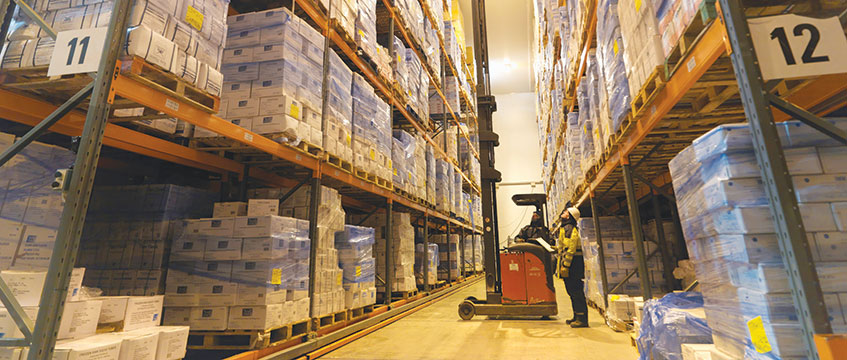Shed development stalls amid shortage of land
Developers are finding it more difficult to respond to the need for new industrial space as planning activity drops across the UK, despite considerable demand from retailers.
Figures from Radius Data Exchange suggest that in the year to the end of July planning activity reached 60m sq ft, 23% down on the same period last year, and 22% behind the five-year average.
Take-up has dropped considerably against the previous five years, down to 19m sq ft in H1 2018, inferring that there is a real lack of supply of the right type of stock.
Developers are finding it more difficult to respond to the need for new industrial space as planning activity drops across the UK, despite considerable demand from retailers.
Figures from Radius Data Exchange suggest that in the year to the end of July planning activity reached 60m sq ft, 23% down on the same period last year, and 22% behind the five-year average.
Take-up has dropped considerably against the previous five years, down to 19m sq ft in H1 2018, inferring that there is a real lack of supply of the right type of stock.
After a few years of concern surrounding levels of undersupply and the wrong type of space, it looks the like the market has reached it pinch point.
Despite faring well in the post-Brexit property lull, the reduction of secondary stock due to the implementation of EPC laws in April this year has also increased the need for more development and refurbishment in the sector.
At the top end of the market, sheds over 100,000 sq ft remain a huge driving force, continuing to eat up more than a quarter of over take-up year-on-year, as retailers continue to morph more of their physical space into the logistics sector.
At the bottom end size-wise, there has been a resurgence in the demand for units under 45,000 sq ft – due in part to the rise in urban logistics and last-mile delivery hubs in increasingly densified, populated areas.
Retailers continue to lead the way in the sheds market, occupying nearly 45% of all activity, driven by consumer demand for shorter delivery times and many retailers consolidating the type of space they need.
The reduction of occupier activity has pushed absorption rates up nationally, though the South East and West Midlands remain perpetually squeezed in terms of currently available standing stock compared with the rest of the country. Both regions recorded increases in percentage of overall take-up over the past five years, along with Yorkshire & Humberside.
London and the North West, however, saaw considerable drops in average take-up for the same period.
With the above considered, investors have momentarily retreated from the market for big ticket-purchases, with investment down 44% in H1 2018 from £2.3bn in H2 2017.
There has been a higher proliferation of smaller assets changing hands for smaller sums, driven by market dynamics and increase in demand for smaller sheds in urban areas to satisfy last-mile delivery.
In the future, we can expect to see larger industrial hubs move to away from traditional areas like the Golden Triangle, as competition for land with the residential sector increases.
At the same time, there will be a move toward more smaller sheds in central city and town locations as the industry continues to reconfigure the types of sheds that are needed to cope with the demands from consumers.
To send feedback e-mail james.child@egi.co.uk or tweet @jamesChildEGi or @estatesgazette











